News
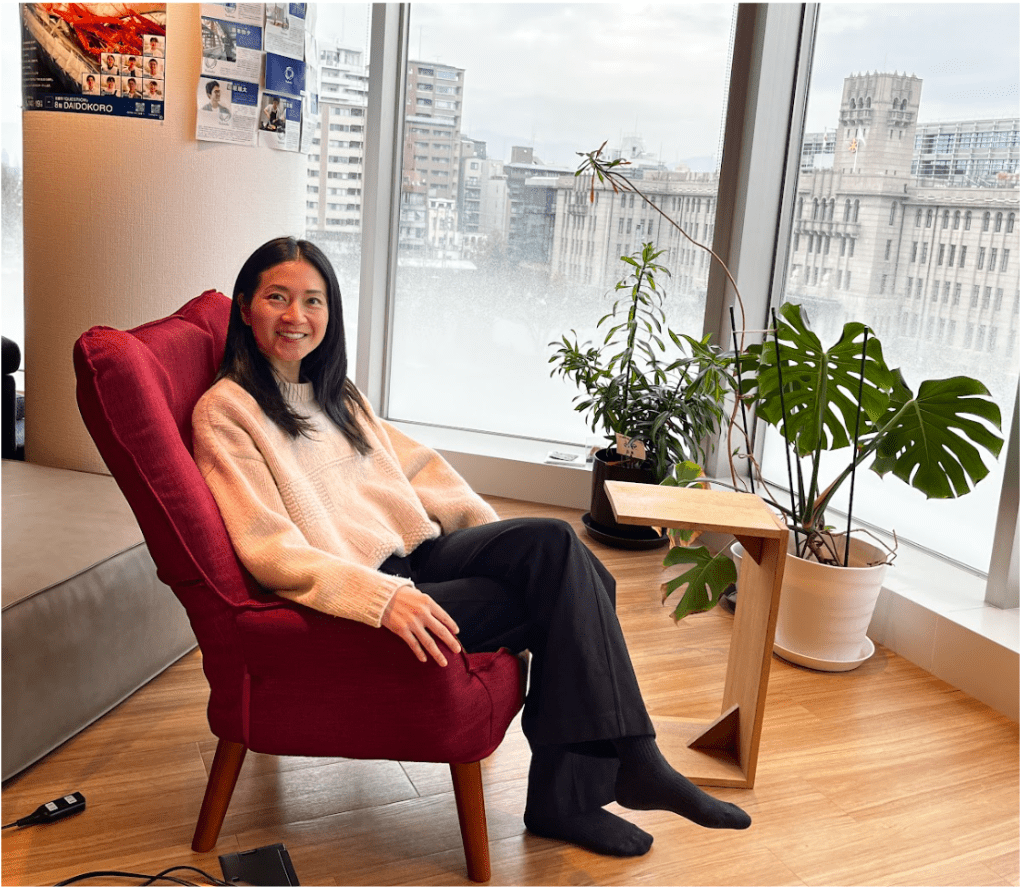
Interview with Yvonne Hung (English version below)
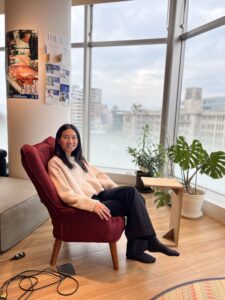
インタビュアー: まず、自己紹介をお願いします。お名前や出身地、これまでのご経歴、そして可能であれば、現在の会社についても教えてください。
Yvonne Hung: はい。私の名前はイヴォン・ハンです。サンフランシスコ出身ですが、香港生まれで、人生の大半をアメリカで過ごしました。専門は都市計画、都市デザイン、プロダクトデザイン、UXデザインと、多岐にわたるデザイン分野に携わってきました。また、起業家でもあり、現在は家具ブランドを運営しています。私のキャリアの大半はシリコンバレーで、UXデザイナーとして大手企業やスタートアップの両方で働き、最先端の技術に携わってきました。
日本では急速な人口減少が進んでいるため、労働力不足を解決する上でテクノロジーが重要な役割を果たすと考えていますし、地方経済の活性化にも欠かせない要素になると思います。私はこれまでのテクノロジーと都市計画の経験、そしてスタートアップのマインドセットを活かして、日本の地方の発展に貢献したいと考えています。
インタビュアー: 最初に起業されたのはいつですか?それが初めての事業ですか?
Yvonne: 若い頃に、レーザーカットジュエリーやインテリア雑貨のブランドを立ち上げました。それが約15年前のことです。当時は都市計画の仕事と並行して、サイドプロジェクトとして運営していました。現在の家具ブランドは、COVID-19のパンデミックが始まった2020年から2021年にかけて立ち上げました。ただ、事業が軌道に乗るまでに時間がかかったので、2023年に再スタートを切り、Kickstarterを活用して「小さな住空間向けのサステナブル家具」ブランドとして展開しました。
新しいプロジェクトについて
インタビュアー: 現在、取り組まれている新しいプロジェクトについて教えてください。
Yvonne: 現在進めているプロジェクトには、いくつかの名前を考えています。「Farm Future」や「Rural Renaissance」といった名称です。簡単に言うと、日本の地方を活性化するためのプロジェクトです。
都市計画のバックグラウンドを活かしながら、地方の経済を再生し、人々が地方に戻って暮らせるようにすることを目的としています。地方を「後進的な場所」ではなく、「現代的なライフスタイルが可能な場所」として再構築したいのです。
リモートワークができる時代なので、都市で仕事をしながら地方に住むことも可能です。また、日本には「半農半X」というライフスタイルの概念がありますよね。このプロジェクトでは、地方で半農的な生活をしながら、多様な働き方を実現できる環境を整えたいと考えています。
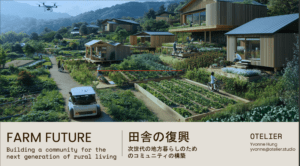
インタビュアー: このアイデアはどこから生まれたのですか?
Yvonne: 自分自身が地方での生活に興味を持ったことがきっかけです。実際に移住しようと考えたとき、日本の地方への移住が非常に難しいことに気付きました。たとえば、住宅の問題や仕事の少なさ、コミュニティとの関係構築の難しさなど、多くの課題があります。
このプロジェクトでは、そうした障壁を取り除くために、すぐに住める住宅を提供し、移住者が一緒に地域コミュニティに馴染めるような仕組みを作ることを目指しています。地方移住のハードルを下げることで、より多くの人が地方に住むことを選択できるようになるはずです。
プロジェクトの具体的な計画
インタビュアー: このプロジェクトでは、どのような規模のコミュニティを想定していますか?
Yvonne: 30~50人規模のコミュニティを想定しています。この人数であれば、地域のプロジェクトやまちづくりに協力し合いながら活動できる、ちょうど良い規模になると考えています。あまりに少人数だと、コミュニティが機能しにくくなるため、一定の規模が必要だと思っています。
インタビュアー: 住宅のタイプについても教えてください。
Yvonne: 3つのタイプを想定しています。
- 戸建て住宅:家族向けに庭付きの1~2LDKのキャビン型住宅を提供。
- コリビングスペース:若者や単身者向けのシェアハウス形式。各部屋にプライベートスペースを確保しつつ、共用のリビング・キッチンを備えた「大人のためのシェアハウス」。
- キャンプスペース:地方の魅力を短期間で体験できる観光客向けのオプション。
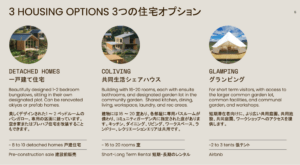
今後の展望と課題
インタビュアー: このプロジェクトの課題は何ですか?
Yvonne: 一番の課題は、空き家(空き家)を再生するコストの高さです。新築するのも高額ですが、空き家のリノベーションはさらに高額になる場合があります。そのため、コストを抑えつつ、持続可能なビジネスモデルを作ることが大きな課題です。
インタビュアー: なぜ京都を選んだのですか?
Yvonne: もともと家具ブランドの展開を考えたとき、京都の職人技術に惹かれたことがきっかけでした。また、サンフランシスコと比べて生活コストが抑えられる点も魅力でした。さらに、歴史や文化の豊かさが都市の魅力として強く感じられたこともあり、京都に可能性を感じました。
インタビュアー: 90日間のプログラムでの目標は?
Yvonne: まずは京都の地方エリアをしっかりとリサーチし、適切なパートナー(自治体や企業)を見つけることが目標です。また、地域の方々と対話しながら、このプロジェクトが実際にどのように機能するかを模索したいと考えています。
まとめ
インタビュアー: 最後に、このプロジェクトの将来についてどう考えていますか?
Yvonne: 長期的には、テクノロジーを活用し、地方の課題を解決できるモデルを確立したいと考えています。農業技術(AgTech)、自動運転、遠隔医療などの技術を取り入れ、持続可能なコミュニティを実現できるようにしたいです。ですのでそういった分野での実験の場を求めてている大企業やスタートアップ、ベンチャー企業との協業も積極的に進めていきたいと思っています。
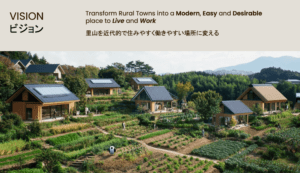
Interview with Yvonne Hung (English version)

Interviewer: First of all, please introduce yourself. Tell us about your name, where you’re from, your background, and, if possible, your current company.
Yvonne Hung: Yes. My name is Yvon Han. I’m from San Francisco, but I was born in Hong Kong and spent most of my life in the United States. I have been involved in a wide range of design fields, including urban planning, urban design, product design, and UX design. He is also an entrepreneur and currently runs a furniture brand. Most of my career has been in Silicon Valley, working in tech as a UX designer for both large companies and startups, where I worked with the latest technology.
Because of Japan’s rapid population decline, I believe that technology will play a crucial role in addressing labor shortages and will be essential for revitalizing the rural economy. I hope to merge my experience in technology and urban planning, as well as the startup mentality, to contribute to rural Japan.
Interviewer: When did you start your first business? Is that your first business?
Yvonne: When I was younger, I started a brand of laser-cut jewelry and home décor accessories. That was about 15 years ago. At that time, I was running it as a side project in parallel with my urban planning work. The current furniture brand was launched in 2020-2021 when the COVID-19 pandemic began. However, it took some time for the business to get off the ground, so we restarted in 2023 and used Kickstarter to develop it as a “sustainable furniture for small living spaces” brand.
About the new project
Interviewer: Tell us about a new project you’re currently working on.
Yvonne: I’m thinking of a few names for the projects I’m working on. Names like “Farm Future” and “Rural Renaissance”. To put it simply, it is a project to revitalize rural areas of Japan.
Drawing on his background in urban planning, he aims to revitalize the local economy and enable people to return to their rural areas. We want to rebuild the countryside not as a backward place, but as a place where a modern lifestyle is possible.
In an age where remote work is possible, it is possible to live in a rural area while working in a city. Also, in Japan, there is a concept of a lifestyle called “half-farmer, half-X”. In this project, we want to create an environment where people can live a semi-agricultural life in rural areas while realizing diverse work styles.

Interviewer: Where did this idea come from?
Yvonne: It all started when I became interested in living in the countryside. When I actually thought about immigrating, I realized that it was very difficult to move to rural areas in Japan. For example, there are many challenges, such as housing issues, a lack of jobs, and difficulties in building relationships with the community.
In order to remove these barriers, the project aims to provide ready-to-live housing and create a system that allows migrants to integrate into the local community together. By lowering the hurdles to rural migration, more people should be able to choose to live in rural areas.
Specific plan of the project
Interviewer: What size of community do you envision for this project?
Yvonne: We envision a community of 30~50 people. With this number of people, we believe that it will be just the right size to work together in local projects and community development. If the number of people is too small, it will be difficult for the community to function, so I think a certain scale is necessary.
Interviewer: Can you tell us about the type of housing?
Yvonne: We have three types in mind:
- Detached house: We provide 1~2LDK cabin type houses with gardens for families.
- Co-living space: A share house format for young people and singles. A “share house for adults” with a shared living room and kitchen while securing a private space in each room.
- Camping space: An option for tourists who can experience the charm of the province in a short period of time.

Future Prospects and Challenges
Interviewer: What are the challenges of this project?
Yvonne: The biggest challenge is the high cost of rehabilitating vacant houses. New construction is expensive, but renovating a vacant house can be even more expensive. Therefore, creating a sustainable business model while keeping costs down is a major challenge.
Interviewer: Why did you choose Kyoto?
Yvonne: Originally, when I was thinking about developing a furniture brand, I was attracted to the craftsmanship of Kyoto. It was also attractive that the cost of living was lower than that of San Francisco. In addition, the richness of history and culture was strongly felt as an attraction of the city, and I felt that Kyoto has potential.
Interviewer: What are your goals for the 90-day program?
Yvonne: My first goal is to do a lot of research on the local area of Kyoto and find the right partners (municipalities and companies). We also want to engage with local residents to explore how this project will work in practice.
Summary
Interviewer: Finally, what are your thoughts on the future of this project?
Yvonne: In the long term, we want to establish a model that can leverage technology to solve local challenges. We want to incorporate technologies such as AgTech, autonomous driving, and telemedicine to enable sustainable communities. Therefore, I would like to actively promote collaboration with large companies, startups, and venture companies that are looking for places to experiment in such fields.



